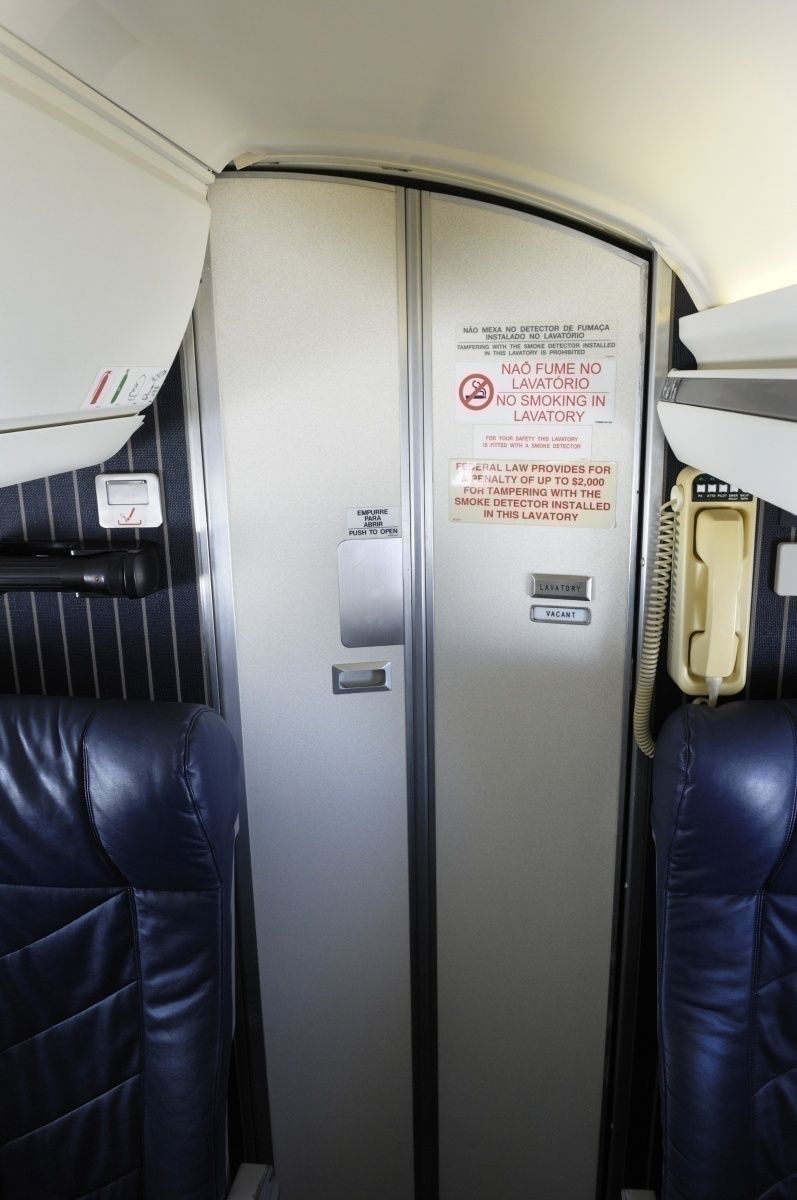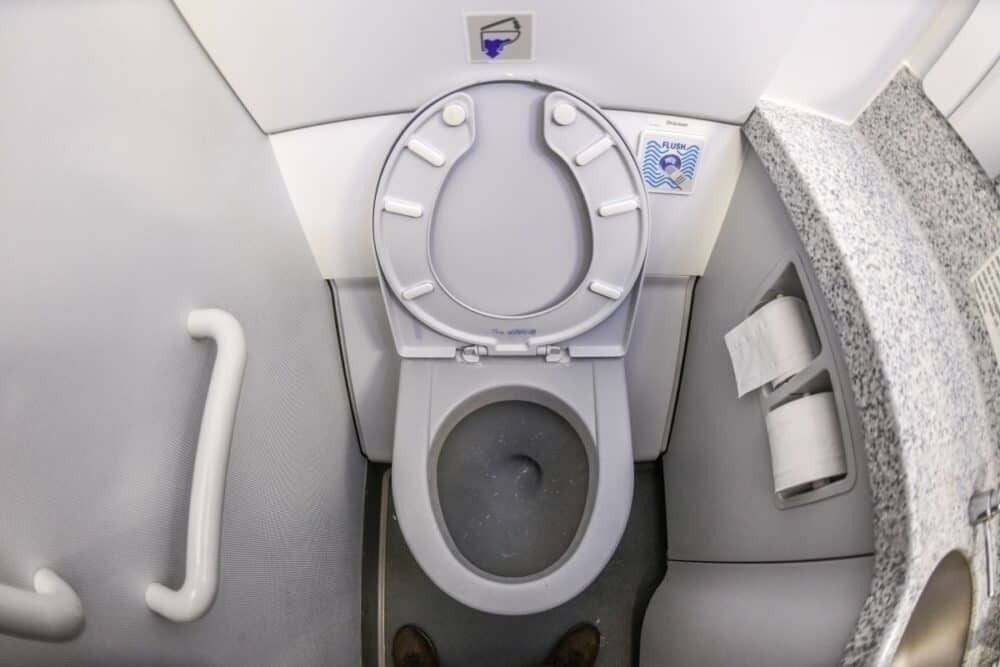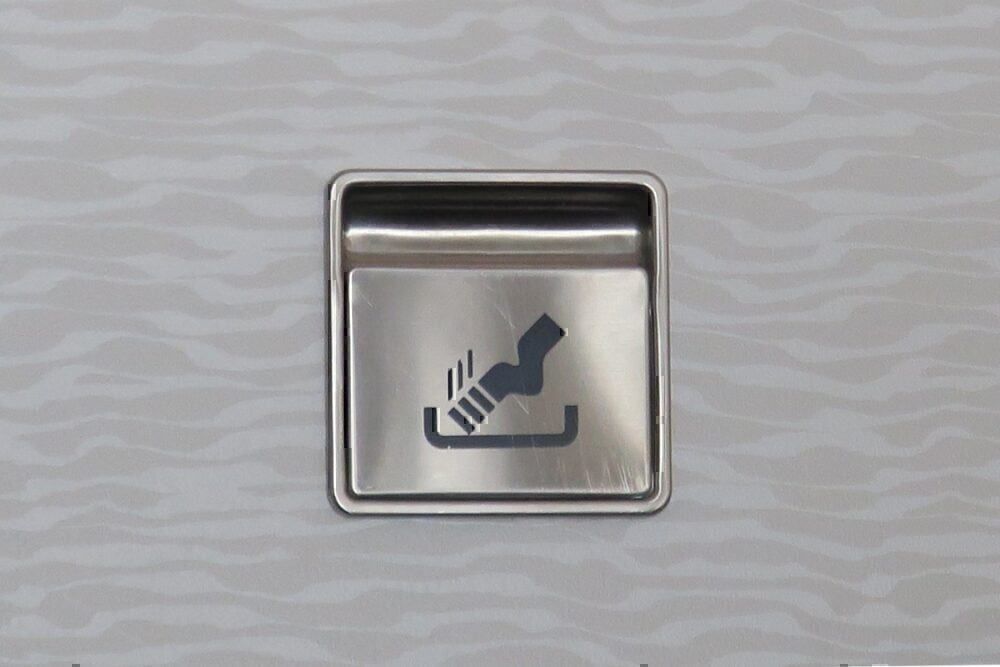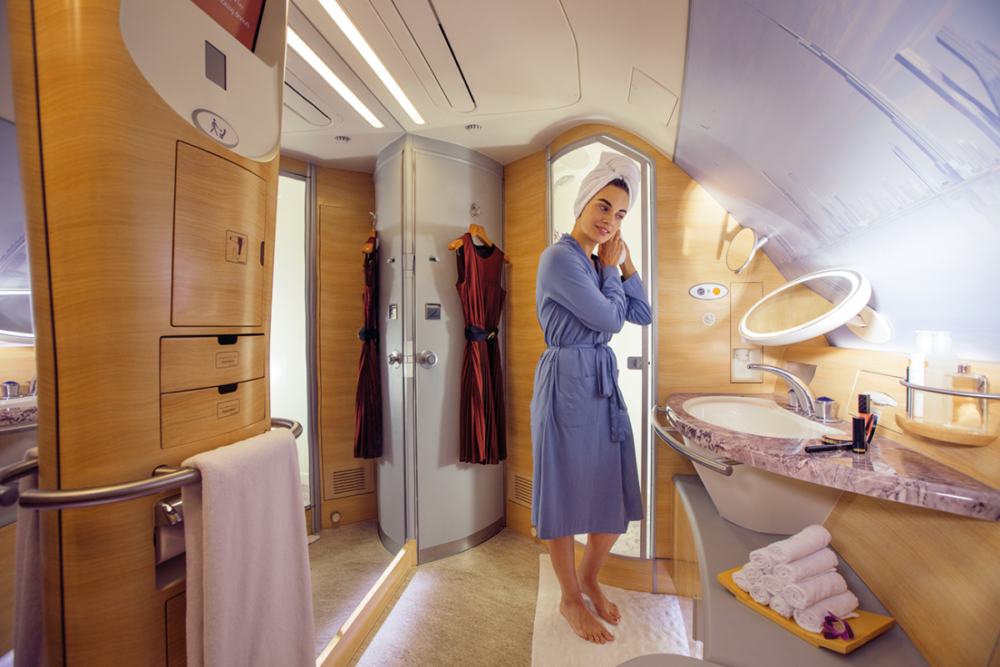Aircraft toilets aren't something that gets written about a great deal, but of course, are integral to the operation of every flight. Do you know how the toilet system works, and what changes have taken place over the years? This article explores this.
How does the aircraft toilet work
The most innovative part of the aircraft bathroom is undoubtedly the toilet. You will have noticed that this doesn't work anything like a regular toilet on the ground. There is no water-filled bowl, and the 'flush' is more of a forced evacuation that gentle water cleanse. It is operated using a vacuum-based system and a non-stick toilet bowl.
The vacuum-system was invented (and patented) in 1975 by James Kemper (you can view the US patent details here if you are interested). Before this, chemical toilets were used. These used a minimal amount of water combined with disinfecting chemicals, stored in tanks close to the bathroom.
The vacuum toilet works by pressure difference. The waste tank is kept at a lower pressure than the cabin (it is not pressurized like the cabin is). When the flush button is pressed, a valve at the base of the bowl opens, and the contents are sucked out. A small amount of blue disinfectant liquid is also passed through. There is also a vacuum pump that can be used when on the ground.
This development has proved very successful and has changed very little since the 1970s. The need for very little liquid to be stored is vital to keep weight down, and waste tanks can be placed towards the rear of the aircraft, far from toilets and cabins.
What is the ashtray doing there?
Another thing that has not changed since the 1970s is the presence of an ashtray. This is very strange because smoking has been banned since at least 2000 (it was banned on domestic US flight in 1987). If you look at the wall near the door in most aircraft bathrooms, though, you will still find an ashtray.
The reason for this is safety. It remains a Federal Aviation Administration (FAA) requirement to have such ashtrays in the bathroom. The thinking behind this is that there should still be a safe place provided to extinguish and place a cigarette, should someone decide (against the law) to light one.
Bathrooms large and small
While the technology and operation of the toilet have remained much the same since the 1970s, the size and design have not. The past couple of decades has probably seen the most change here, in both directions.
The A380 has brought many innovations, including returning to the old days of onboard bars and lounges, more spacious suite seating, and even an onboard apartment with Etihad. It has also led to larger, more luxurious bathroom spaces and onboard showers for the first time.
At the other extreme, the race to pack in ever more seats had led to some of the smallest bathrooms being introduced. On the Boeing 737 MAX, for example, these have shrunk to just 39 inches long, 24 inches wide. For comparison, on a 757-300, the bathrooms are 41 inches long by 35 inches wide.
There have even been proposals to install urinal bathrooms, with each current toilet area being able to take two urinal toilets. Plans like this are yet to go anywhere.
Would you like to share anything you know about aircraft toilets or experiences with the best and worst out there? Let us know in the comments.




